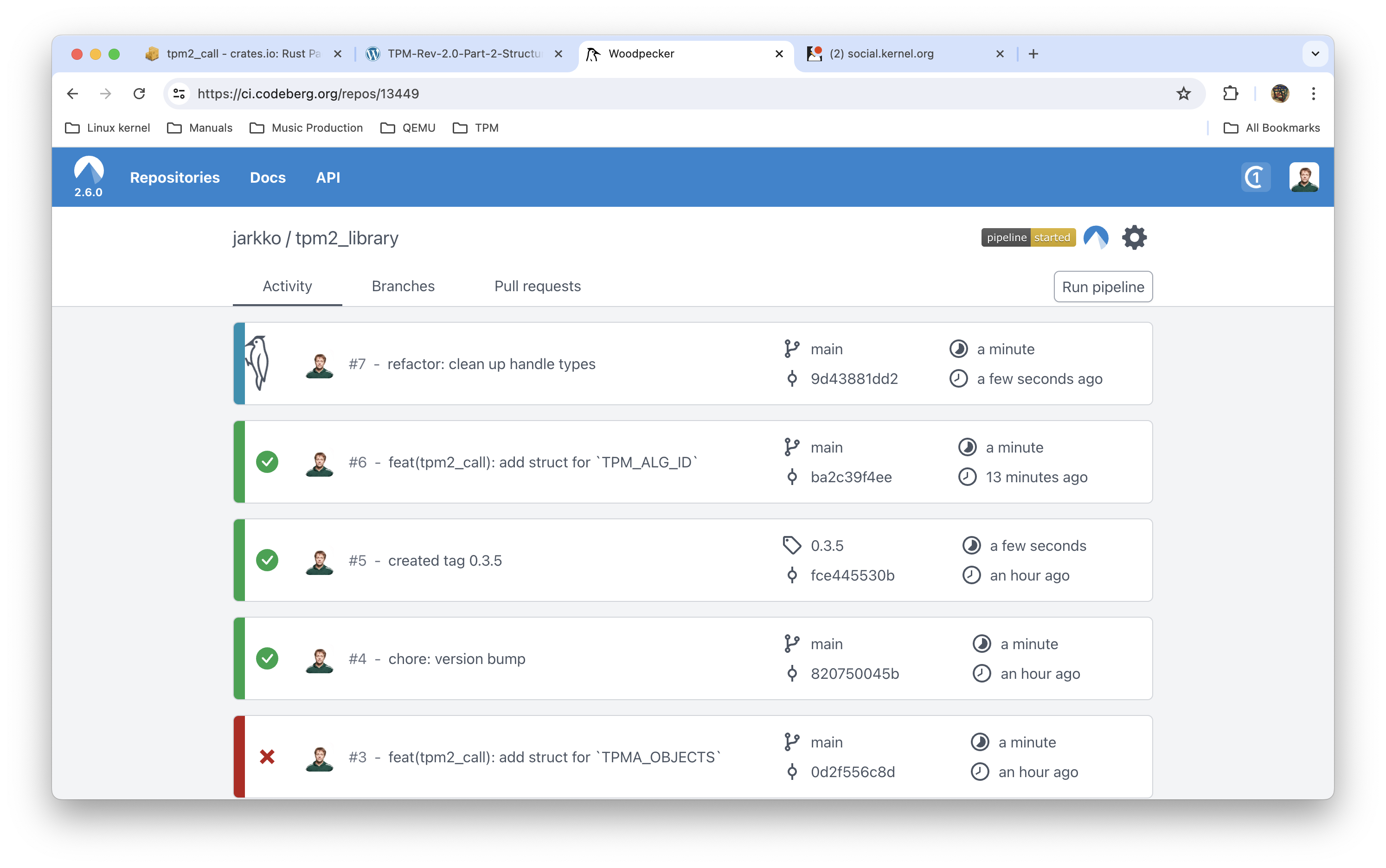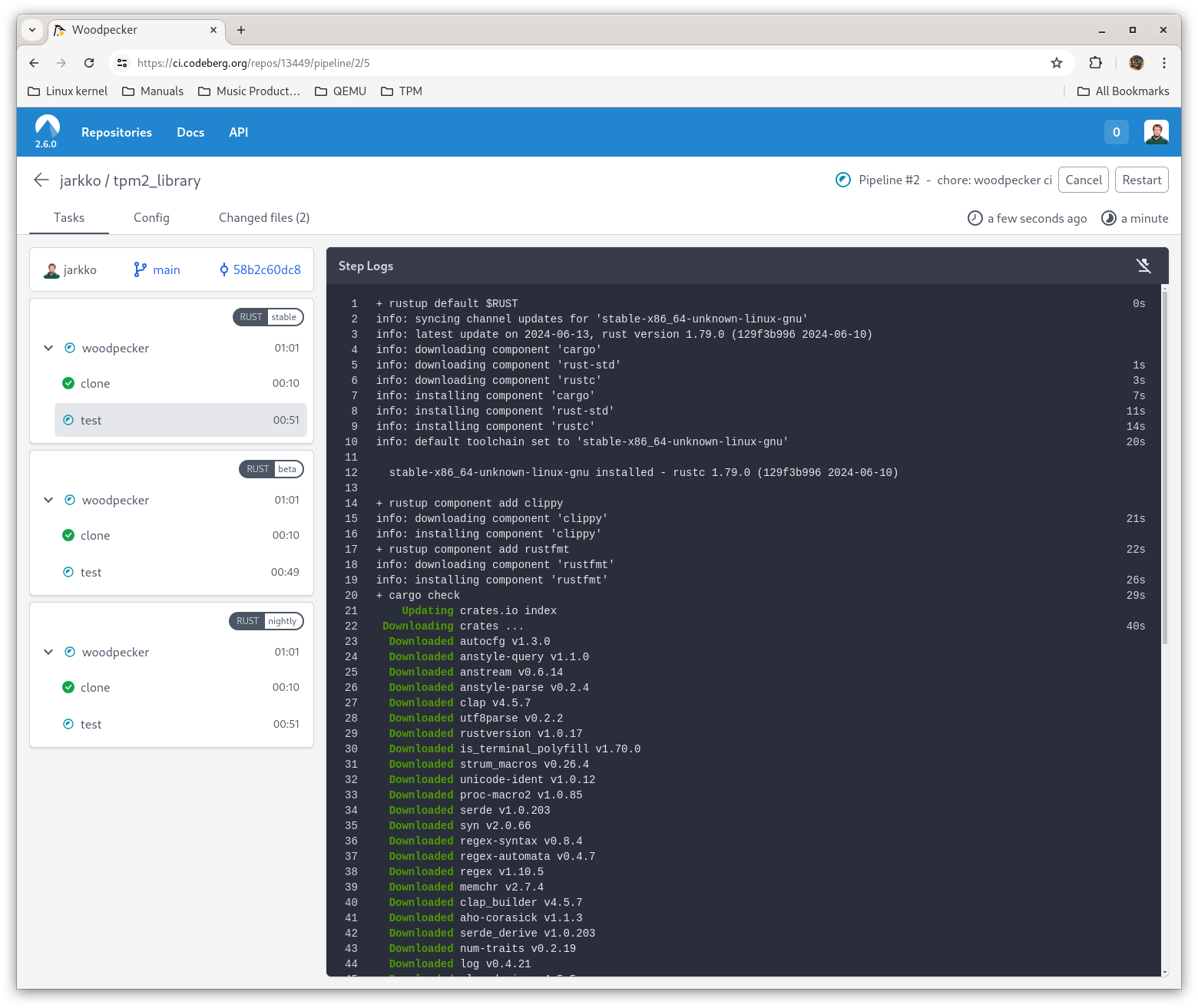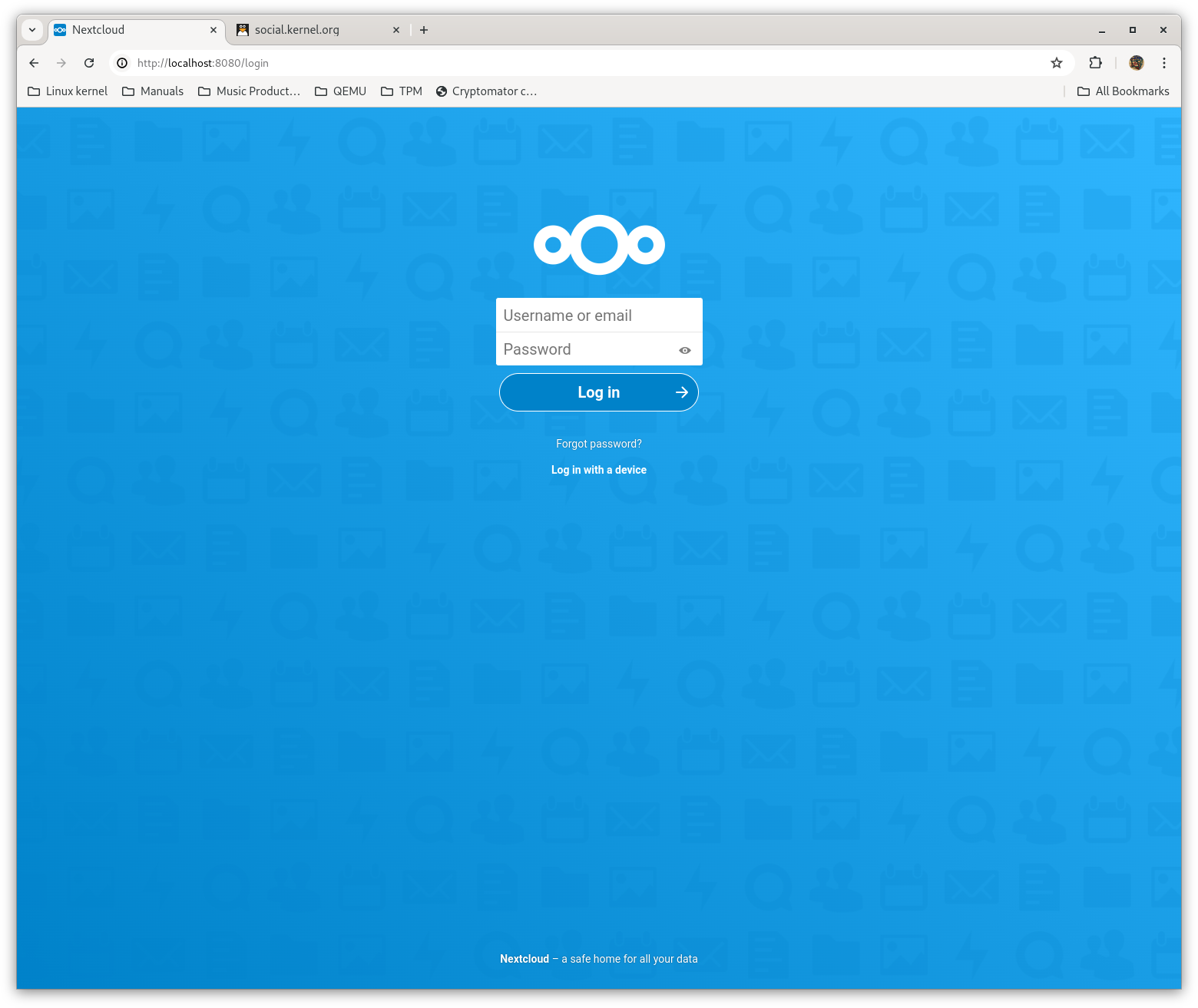Posts
5046Following
330Followers
504OpenPGP: 3AB05486C7752FE1
Jarkko Sakkinen
jarkkoNot true. It is just kept relatively small (like 2GB and similar figures) because its main job is these days to provide depth in failure tolerance for near OOM situations.
Back in the day it was for "spare slow memory space", which is of course not applicable anymore.
Except: if hibernation is used it obviously need to be larger than the system memory.
Jarkko Sakkinen
jarkkoneed this for my #btrfs to #ext4 migration 🤷 https://codeberg.org/jarkko/adhoc-backup #git
#codesberg - “Probably the best git hosting in the world”
Jarkko Sakkinen
jarkkoFound a null pointer deference in archinstall.
this flips:
root@archiso ~ # cat user_credentials.json
{
"!root-password": null,
"!users": [
{
"!password": null,
"sudo": true,
"username": "jarkko"
}
],
"encryption_password": null
}
this does not flip:
root@archiso ~ # cat user_credentials.json
{
"!root-password": null,
"!users": [
{
"!password": null,
"sudo": true,
"username": "jarkko"
}
],
"encryption_password": ""
}
it crashes when moving the cursor in the main menu on top of the “disk encryption”.
Jarkko Sakkinen
jarkkoGiven that I want to switch back to ext4, i need to also reinstall.
I went through manually installed RPM packages, narrowed the list down to 41 most critical, and here’s what I ended up with:
aerc bat bison ccache clang cmake expect fatcat flex fzf gcc github-cli gh git gnupg hatch hyperfine irssi mc mediainfo meson mmv msmtp ncdu neovim openssl pam-u2f pass patch pwgen qemu ranger rclone ripgrep sha3sum socat strace tealdeer w3m zig zola zoxide zsh
These are mapped to Arch Linux package names. I’ll install that distribution because I can just pass that list to archinstall be back in online maybe about ~2h :-)
It goes like this:
- Install Arch Linux to VM and use archinstall for this.
- Export json.
- [Backup json too.]
- On bare metal boot from stick and pass that json to the installer and shit will just happen!
Now that I anyway have to reinstall I found out about how this works and it plain just make sense to me…
EDIT: actually 42 packages, gnupg was missing, well anyway…
Jarkko Sakkinen
jarkkoCargo is almost like Docker in this context. I can just compile #BuildRoot image with #cargo baked in, and once the image boots up it can install test apps from cargo.
Super nice approach for doing something more complex than kselftest but going to podman would be over the top...
#rustlang
Jarkko Sakkinen
jarkkoUsing #Storj and local #Nextcloud (one per machine) is actually quite easy:
!/usr/bin/env bash
# Taken from https://fedoramagazine.org/nextcloud-20-on-fedora-linux-with-podman/.
podman network create nextcloud-net
podman volume create nextcloud-app
podman volume create nextcloud-data
podman volume create nextcloud-db
# MariaDB
podman run --detach \
--env MYSQL_DATABASE=nextcloud \
--env MYSQL_USER=nextcloud \
--env MYSQL_PASSWORD=DB_USER_PASSWORD \
--env MYSQL_ROOT_PASSWORD=DB_ROOT_PASSWORD \
--volume nextcloud-db:/var/lib/mysql \
--network nextcloud-net \
--restart on-failure \
--name nextcloud-db \
docker.io/library/mariadb:10
# Nextcloud
podman run --detach \
--env MYSQL_HOST=nextcloud-db.dns.podman \
--env MYSQL_DATABASE=nextcloud \
--env MYSQL_USER=nextcloud \
--env MYSQL_PASSWORD=DB_USER_PASSWORD \
--env NEXTCLOUD_ADMIN_USER=NC_ADMIN \
--env NEXTCLOUD_ADMIN_PASSWORD=NC_PASSWORD \
--volume nextcloud-app:/var/www/html \
--volume nextcloud-data:/var/www/html/data \
--network nextcloud-net \
--restart on-failure \
--name nextcloud \
--publish 8080:80 \
docker.io/library/nextcloud:20
So no need to use Oracle cloud for this. And instances do not really need to necessarily to sync up given the user count.
Jarkko Sakkinen
jarkkoI published source code for my #resume here, which is entirely made with Typst:
https://codeberg.org/jarkko/resume
I tried to take extra care properly cover everything with CC-BY-NC-SA-4.0 before publishing it.
The reason why I posted is however this nice small script that I did:
❯ cat scripts/license-photo.sh
#!/usr/bin/env sh
exiftool \
-XMP-xmpRights:UsageTerms="CC-BY-NC-SA-4.0" \
-XMP-xmpRights:WebStatement="https://creativecommons.org/licenses/by-nc-sa/4.0/" \
images/photo.jpg
exiftool images/photo.jpg | grep -E "^Usage Terms|^Web Statement"
The script injects CC-BY-NC-SA-4.0 as part of the EXIF metadata embedded to the image.
Not doing this would have caused my weird OCD symptoms and sleepless nights ;-)
Ya, and also in this my Git starts with a “merkle commit”:
❯ git log --oneline
21f8497 (HEAD -> main, origin/main, origin/HEAD) Initial commit
a79299e
I.e. “the empty set” is public domain and not enforced by CC-BY-NC-SA-4.0 ;-) I like licensing and security borders that are clear and visible…
Jarkko Sakkinen
jarkkoAlacritty upstream NAK’d my install script so I created a repository for it:
https://codeberg.org/jarkko/alacritty-install
I also modified it to install the icon and desktop file by default with the perfix ~/.local .
Usage:
alacritty-install -h
usage: alacritty-install [-bhp]
-b <wayland|x11> select the rendering backend
-h usage information
-p <prefix> select the installation prefix (defaults to '/usr/local')
Just a convenient way to get the bleeding edge binary, which is convenient because typical Rust app is a single fat binary.
Jarkko Sakkinen
jarkko#alacritty #upstream #x11 #wayland
Jarkko Sakkinen
jarkkoN=1 in PR's :-)
#codeberg #irssi
Jarkko Sakkinen
jarkkohttps://en.wikipedia.org/wiki/Codeberg
I'd like to see actors like EU and Linux Foundation give some donations/funding/hosting for the sake of providing non-profit but still easy to use and competitive Git hosting for the open source ecosystem (but that is not up to me).
Jarkko Sakkinen
jarkkoJarkko Sakkinen
jarkkoInstalled gh (cli.github.com) for the sake of convenience of being able to do this:
gh release download v2.6.0 -R woodpecker-ci/woodpecker




